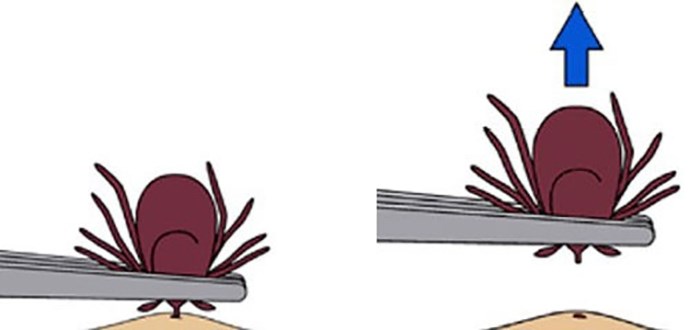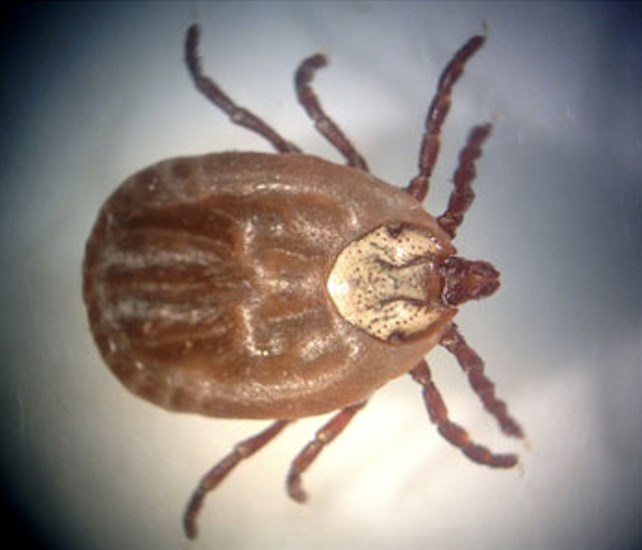
A Rocky Mountain wood tick is seen in this June 18, 2018 photo.
Image Credit: FLICKR / NPS / Jacob W. Frank
June 13, 2022 - 6:00 AM
After returning from a campfire in the South Okanagan with a tick embedded in my head, it was relieved to find out the particular species does not transmit Lyme disease.
The encounter with the tick probably happened in the woods near Agur Lake west of Summerland, as I was enjoying a campfire there the day before I discovered it.
It was attached to the back of my scalp, and like my previous experiences with tick bites, they tend to choose the thickest part of the hair to hide in. I noticed it when I scratched an itch on my head, and it felt like a pimple. But I knew right away it was a tick, as I’ve experienced the same thing before.
It’s an unsettling feeling to know a parasite was literally in my skin, had been since the day before and the bite may result in lifelong consequences.

A wooded area near Agur Lake.
(DAN WALTON / iNFOnews.ca)
READ MORE: Interior Health: It's time to talk about ticks
It was time to go to the bathroom. Tweezers are the best tool to yank the tick out with, but they’re stubborn little buggers. Having somebody else remove the tick is helpful, especially when it’s in a hard-to-reach spot.
There’s still a red bump where the tick bit me, and it was itchy for a few days like a mosquito bite. In hindsight, I regret not taking a couple minutes to research the best ways to remove the insect, because I feel like the bump wouldn't be so big had I found a gentler way to remove it.

Image Credit: www.cdc.gov
The U.S. Center for Disease Control advises these techniques but removing the tick in real life was far more tedious than their illustration makes it seem.
Most of the ticks in the Interior Health region are wood ticks, according to the health authority, and they do not carry Lyme disease. Interior Health says ticks that carry Lyme disease are more common in the coastal areas of the province. Only around one per cent of ticks tested in B.C. had the bacteria that can cause Lyme disease.

A female Rocky Mountain wood tick.
Image Credit: B.C. Ministry of Agriculture
But even if the chances of contracting Lyme disease in the region are slim, I still wanted to be certain that wasn’t the case.
In order to get the tick tested through Interior Health, a doctor has to submit it to the B.C. Centre for Disease Control. The health authority recommends keeping the tick alive in a container with a wet cotton ball.
Scheduling an appointment is a bit of a commitment though, and without any serious symptoms, I wasn’t willing to waste a doctor’s time on my bug bite. I was hoping there was an easier way to get the bugs tested in the Interior Health region.
I sent a photo of the tick to eTick.ca instead, along with the time and location. It was quick and easy to do.

eTicks.ca identified the tick in this photo as belonging to the Dermacentor species, which do not transmit Lymes disease.
(DAN WALTON / iNFOnews.ca)
In just over 24 hours – and on a Saturday – I got a response. The tick was identified as belonging to the Dermacentor species.
“Dermacentor ticks do not carry Lyme disease bacteria,” the email reads, with the words “do not” underlined.
That was nice to see.
The rest of the paragraph was not as comforting however.
“In B.C., Dermacentor ticks can very rarely carry other diseases."
READ MORE: Experts expect bad year for ticks as disease-carrying bugs expand range in Canada
Other diseases can be transmitted after 18 hours of being latched on. And after five days attached, Dermacentor ticks can cause paralysis in their host, although that is rare, according to eTick.ca.
“This condition is prevented by quickly removing the tick.”
It was recommended I dispose of the bug, as Dermacentor ticks are not tested for diseases in B.C.
As a member of the Dermacentor species, the one that bit me was either a Rocky Mountain wood tick, and American dog tick or a moose tick but “these species can’t reliably be distinguished using photographs,” eTick.ca says.
It was probably a wood tick though, which the email said are common in B.C., whereas American dog ticks are rare. And moose ticks tend to feed on large, hoofed animals.
But whichever type of tick is was – it's nice to rule out the possibility of contracting Lyme disease from it. And if it were the type of tick that can transmit Lyme disease, I would have been able to treat it much sooner than later.
READ MORE: Heat map shows high risk for Lyme disease spreading ticks in Kamloops, Okanagan
To contact a reporter for this story, email Dan Walton or call 250-488-3065 or email the editor. You can also submit photos, videos or news tips to the newsroom and be entered to win a monthly prize draw.
We welcome your comments and opinions on our stories but play nice. We won't censor or delete comments unless they contain off-topic statements or links, unnecessary vulgarity, false facts, spam or obviously fake profiles. If you have any concerns about what you see in comments, email the editor in the link above.
News from © iNFOnews, 2022